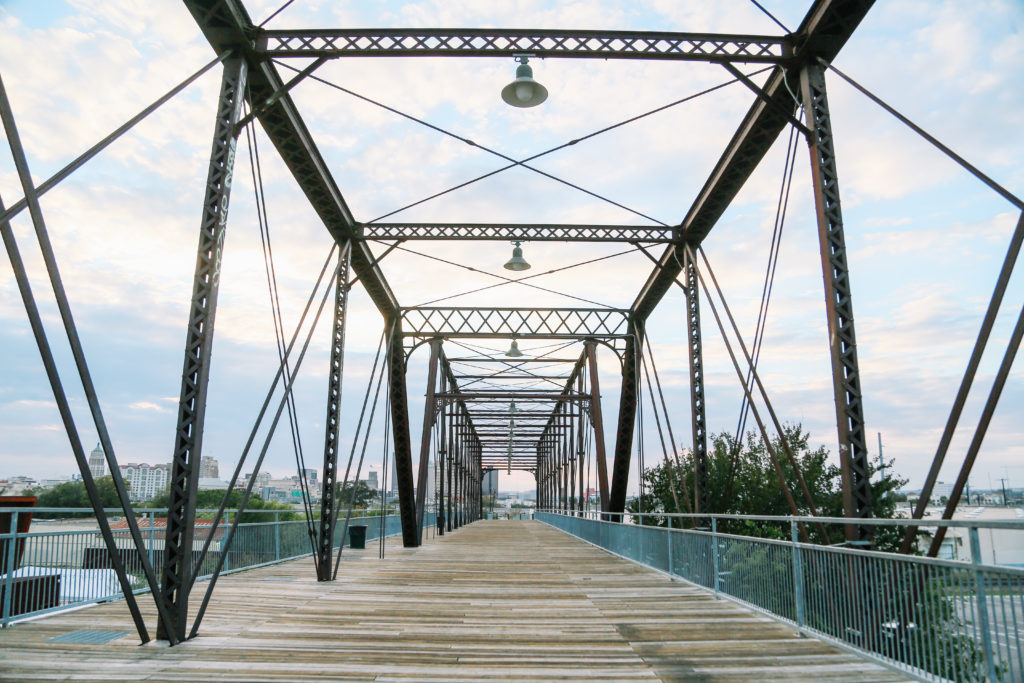The last ten years have proven that driving progress toward a shared Community Vision requires targeted, race-conscious investments informed by San Antonians most impacted by systemic inequities. The following bold efforts have driven real progress toward the goals we set together. While this list of policies, resource allocations, and services is meant to be sweeping, touching every corner of the shared Community Vision, it is not meant to be exhaustive. As the community faces the COVID-19 crisis, these bold efforts also offer lessons on how we can work together to best achieve Community Results, as well as opportunities to strengthen program and service delivery.
2010
cafécollege
cafécollege, formed in 2010 by then-Mayor Julián Castro and managed by the San Antonio Education Partnership, has served nearly 80,000 students over the last ten years with no-cost support in college enrollment, financial aid, goal setting, career planning, and more. The downtown center serves middle through high school students, parents and guardians, and adults with some college but no degree.
Decade of Downtown
Then-Mayor Julián Castro coined the phrase “Decade of Downtown” to realize the Community Result developed by thousands of San Antonians during the original visioning process. Since then, San Antonio has seen an increase in downtown housing units, an increase in downtown employment, and an increase in downtown economic impact.
San Antonio’s original community visioning process
In 2010, nearly 6,000 San Antonians envisioned the future of the city through a series of public forums and surveys. Then-Mayor Julián Castro led the original visioning process with the support of a 26-member volunteer Steering Committee. San Antonio’s shared Community Vision launched with 11 Community Results and 59 Community Indicators prioritized by San Antonians. SA2020 became the nonprofit responsible for driving progress toward a shared vision for a thriving San Antonio.
2011
B-Cycle
San Antonio Bike Share, a nonprofit organization, launched B-Cycle, the first bike share in Texas. The bike share system offers a new way to use public transportation and help face environmental, health and transportation challenges.
Geekdom
Located in Downtown San Antonio, Geekdom opened in 2011 as an environment to create and grow startups at any level. Through mentorship, programs, and resources, Geekdom continues to provide a collaborative community helping San Antonio become one of the best places for entrepreneurship.
Public Arts San Antonio
Since 2011, the City of San Antonio has dedicated one percent of eligible capital improvement funds to the acquisition, commissioning, installation, and conservation of public art. In partnership with artists, multidisciplinary professionals, and community organizations, the Department of Arts and Culture uses art and creative placemaking to enrich San Antonio’s public spaces.
Síclovía
Síclovía, a free, bi-annual event, turns downtown city streets car-free so community members can safely exercise, play, explore and enjoy the outdoors. Organized by the YMCA of Greater San Antonio in partnership with parks, local businesses and community organizations, Síclovía has come to be one of San Antonio’s largest free community events.
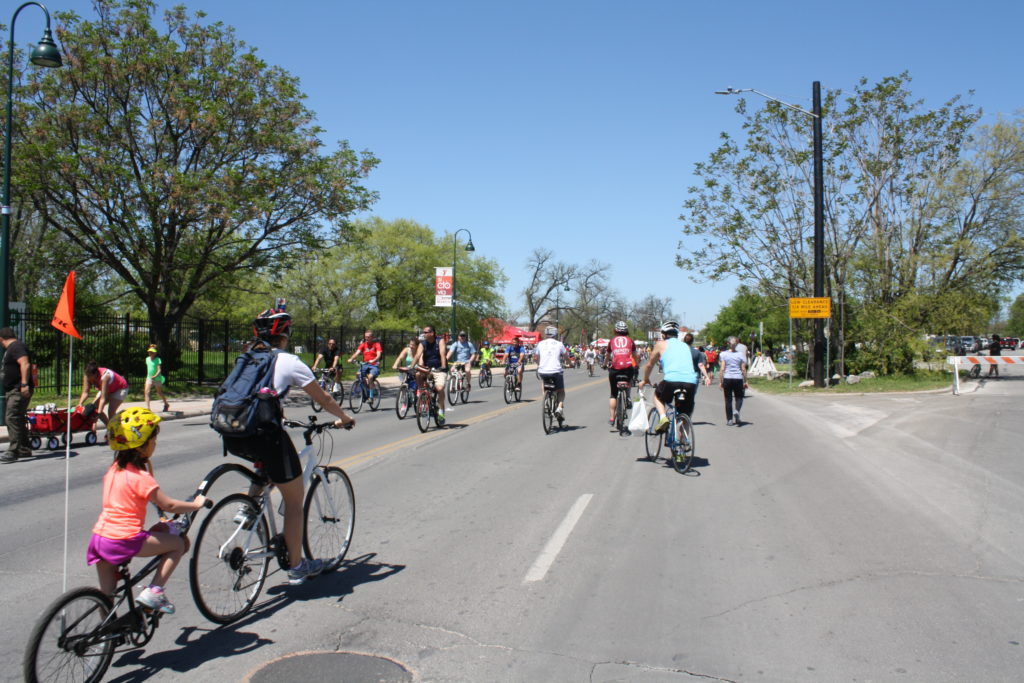
San Antonio Teen Pregnancy Prevention Collaborative
In 2011, the San Antonio Teen Pregnancy Prevention Collaborative identified a lack of sex education and after-school programming as top barriers to reaching the goal for reducing teen pregnancy by 15%. A cross-sector effort, the Collaborative brought together evidence-based practices, co-created solutions with teenagers, and changed the community’s trajectory. In 2010, Bexar County had the highest teen birth rate in the nation at 3,306 (a rate of 51.8 per 1,000). By 2018, it dropped to 1,706 (a rate of 24.66).
2012
College Signing Day
In 2012, San Antonio hosted its inaugural College Signing Day as a part of a weeklong celebration of postsecondary education. This event brought together students from across the city to celebrate their accomplishments and plans for higher education. In 2014, San Antonio’s College Signing Day became the launch site for a national college signing day through then-First Lady Michelle Obama’s Reach Higher Campaign. This led to thousands of College Signing Days across the country. In 2020, when the COVID-19 crisis prevented an in-person celebration, College Signing Day went online, with nearly 13,000 people coming together.
Excel Beyond the Bell
Created in 2012, Excel Beyond the Bell is a professional network of organizations that helps ensure young people have access to high quality development programs. Utilizing data from local public school districts, Excel Beyond the Bell supports partner organizations in better serving their students. Since 2012, 80,000 students have been served by 48 out-of-school time programs.
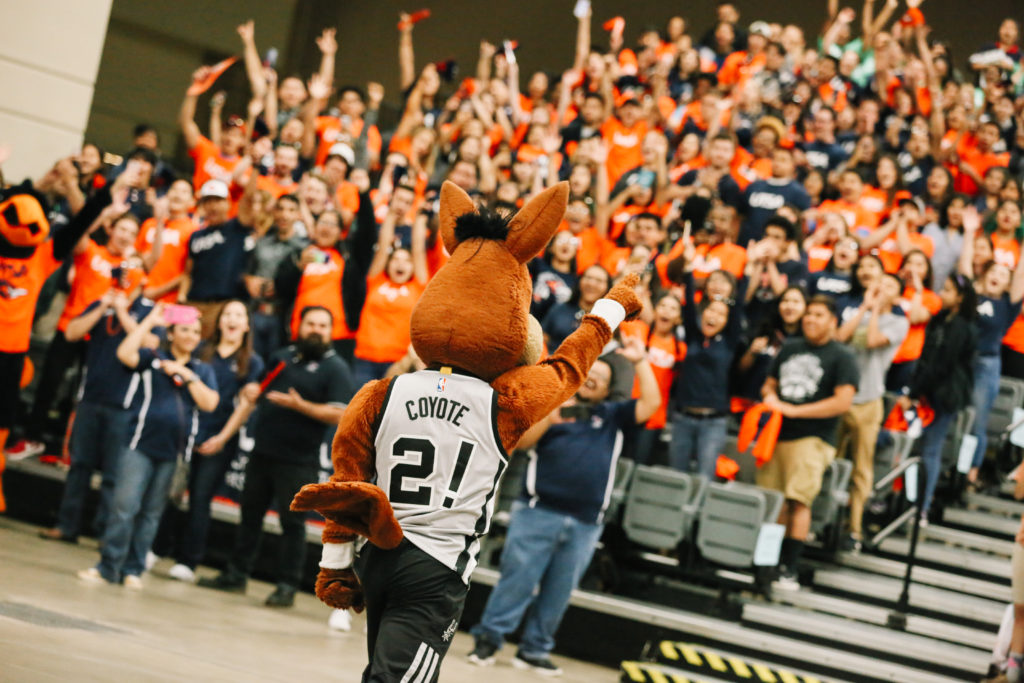
Pre-K 4 SA
Pre-K 4 SA proved early on that everyone is capable of affecting change. In 2010, San Antonians first envisioned high-quality education, from kindergarten through college, for every person in the community. Elected officials wrote the policy behind Pre-K 4 SA, a targeted intervention designed for San Antonio’s 4-year-olds without existing access to a high-quality early childhood education program, and San Antonians went to the polls and approved it in 2012 and again in 2020. According to UTSA’s Urban Education Institute, the first cohort of Pre-K 4 SA students exceeded average state reading scores by 12.1% and exceeded average state math scores by 16.9%.
San Antonio Poet Laureate
In 2012, San Antonio became the first major city in Texas to appoint a Poet Laureate. In the past eight years, San Antonio has seen five Poet Laureates: Dr. Carmen Tafolla (2012-2014), Laurie Ann Guerrero (2014-2016), Jenny Browne (2016-2018), Dr. Octavio Quintanilla (2018-2020), and Andrea “Vocab” Sanderson (2020-2023). The Poet Laureate promotes literary arts through public events and programs in partnership with local organizations and the City of San Antonio’s Department of Arts and Culture.
2013
Brooks
When military operations closed at Brooks Air Force Base in 2011, the Brooks Development Authority repurposed the 1,300-acre area as a mixed-use community open to the public. Governed by an 11-member Board that is appointed by San Antonio City Council, the mission of Brooks is to “promote and develop a vibrant, sustainable community that serves as a catalyst for progressive economic development and regional prosperity.”
DreamWeek
Inspired by Martin Luther King Jr., DreamWeek is an annual, 10-day summit focused on civic engagement and sharing ideas across the community. Since 2013, DreamWeek has partnered with 750 organizations and engaged over 130,000 attendees.
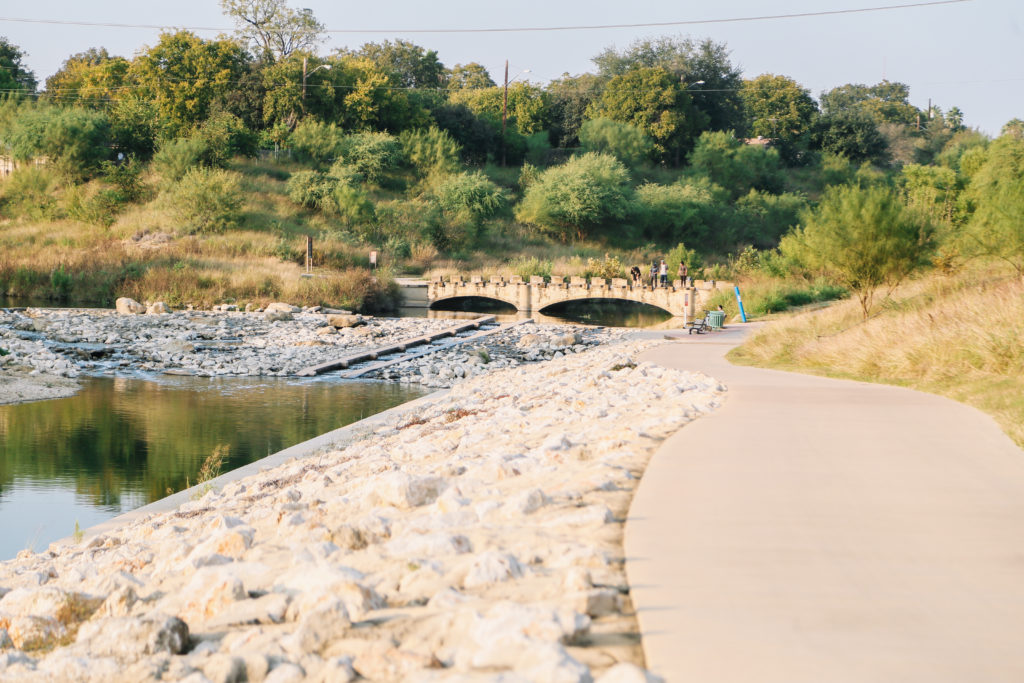
Composting
San Antonians set the goal of reducing material sent to landfills by 60% by 2020. In 2013, the citywide composting and recycling program ordinance was passed. As citywide implementation occurred, San Antonians could adopt a green organics recycling cart and dispose of food and yard waste, diverting household material from landfills.
Mission Reach Restoration and Recreation Project
Mission Reach refers to the eight-mile stretch of the restored San Antonio River from Lone Star Boulevard to Mission Espada. The Restoration and Recreation Project expanded the San Antonio Riverwalk and transformed the San Antonio River into a thriving ecosystem. San Antonians have enjoyed Mission Reach since the grand opening in 2013.
Move San Antonio
Founded in 2013 by UTSA students, MOVE Texas increases participation in local elections. MOVE Texas now operates in ten cities across Texas and is recognized as one of the most effective voter registration efforts in the state.
Non-Discrimination Ordinance (NDO)
The Non-Discrimination Ordinance (NDO) provides protection from discrimination in the areas of City employment, City contracts and subcontracts, appointments to Boards and Commissions, housing, and public accommodation. Within these areas, the NDO prohibits discrimination on the basis of 11 “protected classes.” In 2013, sexual orientation, gender identity, and veteran status were added to the existing protected classes—race, color, religion, sex, disability, familial status, national origin, and age.
2014
EnrollSA
Made up of every major local hospital, Bexar County, the City of San Antonio’s Metropolitan Health Department, and multiple social sector organizations, EnrollSA, Get Bexar Covered, leads targeted strategies to increase enrollment in health insurance. EnrollSA identified zip codes with the lowest rates of people uninsured and partnered with trusted, neighborhood-based community leaders to enroll San Antonians through phone banks, in-person visits, and online engagement. In just one year, the targeted zip codes showed the highest number of enrollment in healthcare plans in the county.
EastPoint
The four-square mile area of EastPoint is home to 18,000 San Antonians and the nation’s largest MLK March. In 2014, San Antonio received one of the first five national Promise Zone designations, resulting in priority access to federal investment and support. San Antonio’s Promise Zone includes EastPoint. The City established the Office of EastPoint in 2014.
SA Tomorrow
San Antonio’s rapid growth trajectory led to the SA Tomorrow Plan, made up of the comprehensive plan, sustainability plan, and multimodal transportation plan.
The Big Give SA
The Big Give, headed locally by The Nonprofit Council, is an annual, 24-hour online day of giving across South Central Texas. Since 2014, the Big Give has raised over $25 million for nonprofits, making it one of the most successful giving days in the country. In 2020, more than 22,000 donors gave over $5 million to 472 organizations.
LaunchSA
LaunchSA (formerly Café Commerce) is the largest microfinance nonprofit in the country. LaunchSA, a partnership between LiftFund and the City of San Antonio’s Economic Development Department, grows entrepreneurship and small businesses through resources, partnerships, and more than 200 mentors representing diverse industries.
My Brother’s Keeper
In 2014, President Barack Obama challenged cities to close opportunity gaps for young men of color. This led to the launch of My Brother’s Keeper San Antonio, which focuses on increasing postsecondary achievement in partnership with more than 30 cross-sector organizations. My Brother’s Keeper promotes restorative justice within schools, facilitates mentoring, and connects students to school and work opportunities.
Google Fiber
In 2015, Google announced a plan to lay 4,000 miles of fiber-optic cables in San Antonio. Once complete, the service will connect San Antonians with free Wi-Fi options and increased access to broadband Internet.
Humana’s Bold Goal
In 2015, Humana launched Bold Goal, a population health strategy to improve the health of the communities in which they serve, including San Antonio, by 20% by 2020. The strategy addresses both clinical and social needs and will continue beyond the year 2020.
2015
Talent Pipeline Task Force Report
In 2014, with funding from the Lumina Foundation and research support by Council for Adult and Experiential Learning (CAEL), SA2020 convened the Talent Pipeline Task Force to develop a plan to better connect education and training to the labor market in target industries. The Task Force consisted of employers, area chambers of commerce, and postsecondary education and social service providers. The Talent Pipeline Task Force report and recommendations, released in 2015, led to the formation of SA Works and Upgrade.
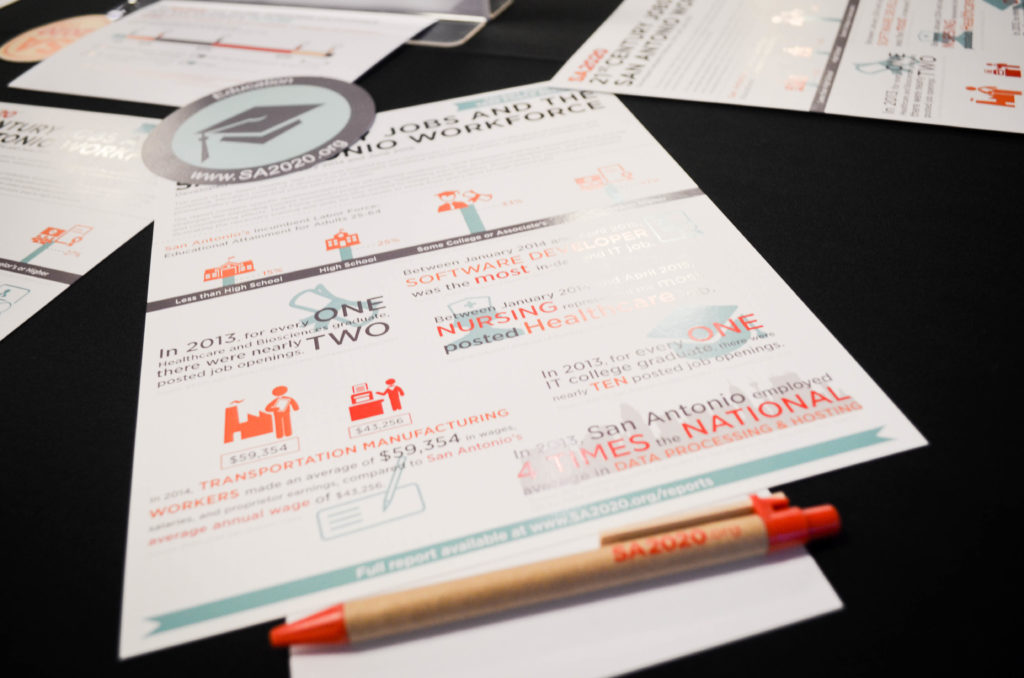
SA Speak Up
The City of San Antonio launched SA Speak Up in 2015 to gather community input on the annual budget. It has since grown to house all of the City’s community engagement efforts. Through surveys and meet ups, the City gathers community input to inform policies and services.
SA Works
SA Works connects high school students with paid internships in target industries, helping ensure students have the resources necessary to achieve college certificates and degrees and begin their careers.
ReadyKidSA
The ReadyKidSA coalition builds on successful child and family programs in San Antonio. The coalition leads a comprehensive early childhood system that promotes the social, emotional, physical and cognitive development of children up to 8 years old, and provides parents and caregivers with the tools and resources to better support their families.
Yanaguana Garden at Hemisfair
Yanaguana Garden at Hemisfair is a four-acre, beautifully landscaped outdoor wonderland for kids and adults of all ages and abilities. It is the first of three segments in the master redevelopment plan for Hemisfair Park.
UNESCO World Heritage Status
The San Antonio Missions were named a UNESCO World Heritage Site. The five Missions are the first UNESCO World Heritage site in Texas and just one of 24 in the U.S.
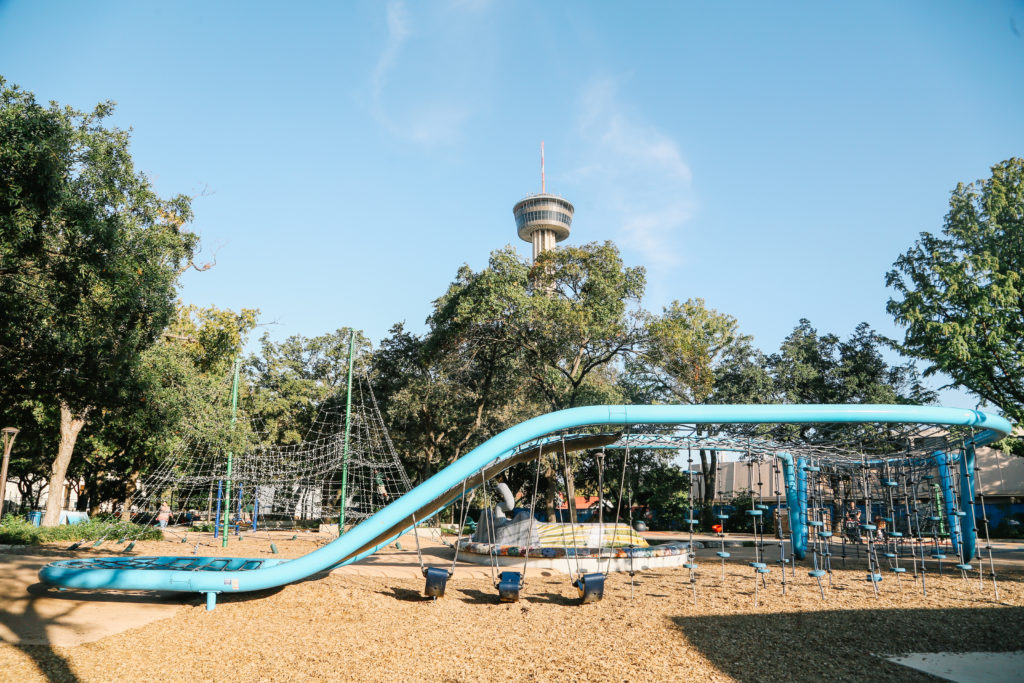
VIA Metropolitan Transit Wi-Fi
In 2015, VIA equipped every bus and van with free high-speed Internet, the first large transit authority to do so. In 2020, when the COVID-19 crisis came to San Antonio and made the digital divide even more stark, VIA’s existing commitment to digital inclusion led to partnerships with multiple agencies to provide VIA mobile hotspots for students and families in neighborhoods.
Vision Zero
In 2015, the City of San Antonio adopted Vision Zero, a national pledge to eliminate traffic fatalities. The City has since allocated millions of dollars toward improving roadway design, road use, and user behaviors.
2016
Autism Lifeline Links
Autism Lifeline Links formed to improve the opportunities and outcomes for individuals on the autism spectrum. Referral agencies and community partners work together to provide individuals, families, and caretakers with the knowledge and tools they need, streamline the process for accessing services, build the capacity of providers to offer services, collect comprehensive data to inform and strengthen services, and build public awareness about people with autism.
“Ban the Box”
In 2016, the City of San Antonio removed all questions about criminal history from civilian job applications and delayed inquiries into any criminal history until after making conditional job offers. The City adopted the “ban the box” practice, joining major Texas cities, in order to mitigate discrimination and stigma, and encourage more people to apply for civilian jobs.
CAST Network
The Centers for Applied Science and Technology (CAST) is a network of tuition-free, industry-led, career-themed high schools in San Antonio. The five schools are overseen by the CAST Network, a nonprofit organization that partners with public school districts, higher education institutions, and in-demand industries. At CAST Schools, students gain real-world experience from internships and mentoring programs, and engage in project-based learning designed by San Antonio employers. CAST Schools are the first of their kind in Texas.
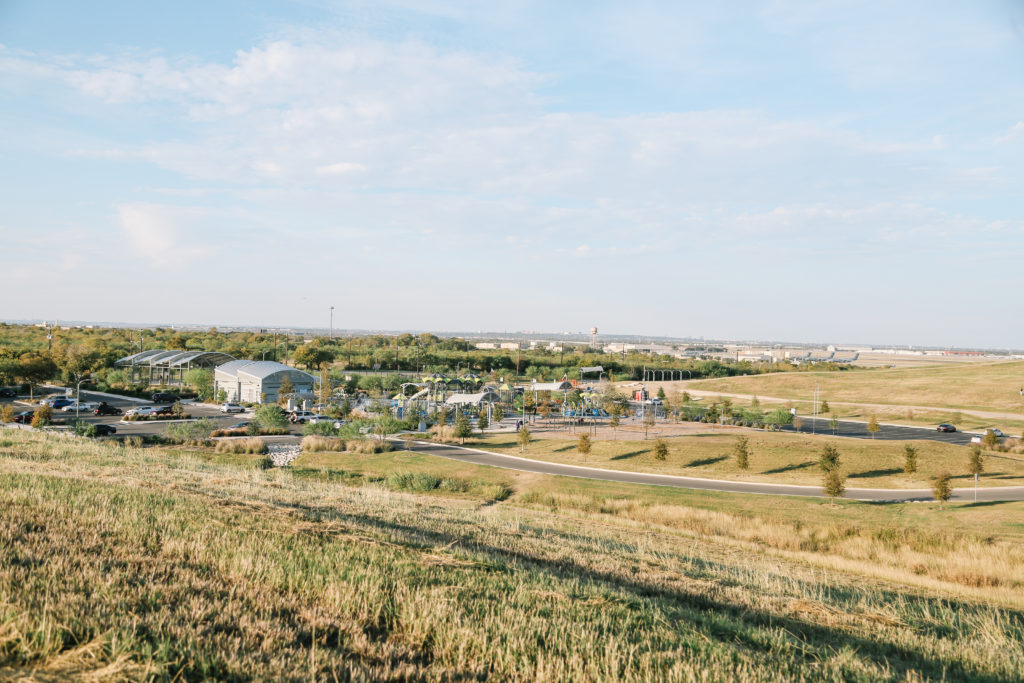
Henry B. Gonzalez Convention Center Expansion
The Henry B. Gonzalez Convention Center, originally built in 1968 when San Antonio hosted the World’s Fair, completed a $325 million expansion in 2016. The largest capital improvement project in the City of San Antonio’s history, this expansion grew the footprint of the Convention Center to 1.6 million square feet.
Pearsall Park
Pearsall Park, located in City Council District 4, is San Antonio’s largest park. Formerly a landfill, the park invites San Antonians to enjoy splash pads, skate parks, a playground, a fitness zone, a zip line and more.
Successfully Aging & Living in San Antonio
In October 2016, 120 seniors convened at TriPoint to inform the strategic direction for Successfully Aging and Living in San Antonio (SALSA). The collaborative, hosted by the San Antonio Area Foundation and made up of more than 30 organizations, continues today as a multi-sector approach to improving the quality of life of older adults in Bexar County.
Maestro Entrepreneur Center
The Maestro Entrepreneur Center offers entrepreneurs support services and resources, including funding opportunities, affordable offices within the center, and business-leader mentors. The Hispanic Chamber of Commerce and the Maestro Leadership Foundation partnered to create the center, located downtown.
MujerArtes Studio
The MujerArtes Women’s Clay Cooperative began in 1995 as a way for women to teach, create, and learn art together. In 2016, the Esperanza Peace and Justice Center broke ground on the MujerArtes Studio. Constructed with Compressed Earth Blocks, the studio is the first commercial building permitted for adobe construction in San Antonio in over 100 years.
Texas A&M University San Antonio (TAMUSA)
In 2016, TAMUSA welcomed its first freshman class. The University’s mission is “to reflect the diverse and heritage rich community it serves.” The University is the only campus in the A&M system located in a large metropolitan city and expects to become the system’s second-largest campus.
2017
Digital Inclusion Alliance San Antonio (DIASA)
Launched in 2017, DIASA advances digital inclusion in San Antonio in order to foster educational attainment, competitive employment, financial prosperity, and greater community engagement. DIASA currently includes over 30 organizations, including nonprofits, government agencies, businesses, education institutions, internet service providers, and media outlets, working to create a more inclusive and digitally equitable San Antonio.
Upgrade
Part of The Graduate Network and the first affiliate in Texas, Upgrade supports working adults over 25 with some college and no degree to return to college and complete their degree. Housed in cafécollege, Upgrade’s services are free to the public.
ilovesanantonio.org/meencantasanantonio.org
Since 2017, SA2020 has maintained ilovesanantonio.org, a local voting resource. The website, hosted in English and Spanish, shares information about upcoming elections and answers commonly asked questions in an effort to make it easier to vote.
Climate Action & Adaptation Plan
City Council passed a resolution in support of the Paris Climate Agreement in 2017 and made a plan to ensure San Antonio is “Climate Ready,” meeting present and future challenges of a changing climate.
UIW School of Osteopathic Medicine
The UIW School of Osteopathic Medicine welcomed its first class in 2017. Located on the Brooks campus, the Osteopathic Medicine School is the fifth health profession school in San Antonio. The school is working to meet the health needs of Central and South Texas.
UNESCO Creative City of Gastronomy
In 2017, UNESCO Creative Cities Network designated San Antonio a Creative City of Gastronomy, which celebrates the blending of culture and cuisine. San Antonio is one of only two cities in the nation to hold this designation.
2018
Mayor’s Housing Policy Task Force
The Mayor’s Housing Policy Task Force launched with a clear goal—to make stable housing a reality for all San Antonio families. In 2018, close to one in two renters and one in five homeowners in San Antonio spent more than the recommended 30% of their income towards housing. A little more than a year after starting their work, the Task Force presented a 10-year plan to City Council to realize 11 affordable housing policy priorities and 24 strategies. The bold recommendation—part of a larger recommended $1.03 billion investment—was co-created with over 550 community members, overwhelmingly made up of volunteers across San Antonio.
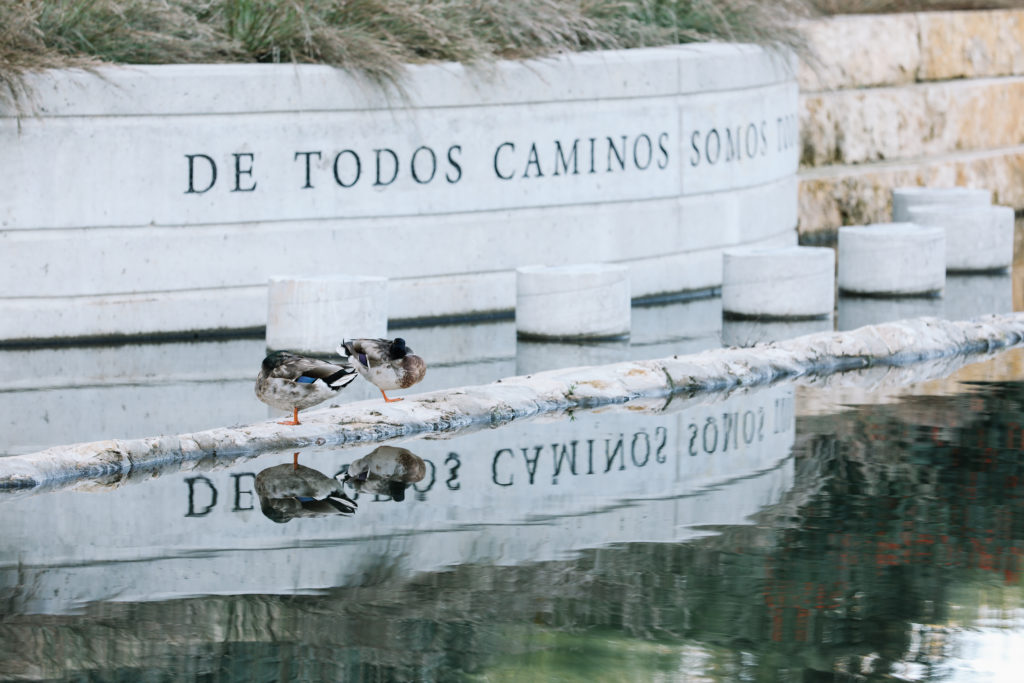
San Pedro Creek Culture Park Phase I
San Pedro Creek Culture Park is a unique urban greenspace that weaves public art and architecture into historic preservation, flood control, water quality and ecosystem restoration. The first phase, completed in 2018, commissioned murals and art representing the history of the land.
Family Tapestry
Family Tapestry aids children in the foster care system and recruits families to become foster families. The Children’s Shelter formed Family Tapestry in 2018 to restructure the service delivery model of critical services to ensure children and youth experience safety, well-being, and permanency.
Speak Up Speak Out (SUSO)
Speak Up Speak Out (SUSO) is a civic education program for elementary through high school students to learn about their communities and propose solutions to their identified challenges to community stakeholders. SUSO helps encourage students to be active participants in their communities.
The Robert Wood Johnson Foundation (RWJF) Culture of Health Prize
San Antonio won the 2018 Culture of Health Prize from RWJF, which honors and elevates U.S. communities working at the forefront of advancing health, opportunity, and equity for all.
The Greenline
Located on the Brooks campus, the Greenline is a 43-acre waterfront, linear park with 1.5 miles of trails, fitness and play structures, a food truck court, public art, pavilions, ponds, plazas, and family-friendly activities.
2019
Super Precinct Model
In November 2019, Bexar County moved to a super precinct model, allowing voters to cast their ballots at any open precinct on Election Day. The total Election Day vote cast in the 2019 Constitutional Amendment election was 56,621, which was more than three times those cast on the same Election Day in 2017 (17,989). Forty percent of voters went to precincts outside their home precinct, according to Bexar County Elections.
The ASPIRE Partnership
The ASPIRE Partnership, a collaboration between Texas A&M San Antonio and seven South Bexar County Independent School Districts, aims to improve academic advancement, career readiness, and social mobility for nearly 70,000 students. ASPIRE will address the specific needs of each participating school district, including increasing teacher capacity, strengthening curriculum development and/or serving children with special needs across south Bexar County and south San Antonio.
The Collaborative Commission on Domestic Violence
In October 2019, the City of San Antonio presented a five-year comprehensive domestic violence plan. The Collaborative Commission on Domestic Violence (CCDV), a cross-sector group including the City of San Antonio, Bexar County, and community organizations, also formed in 2019, to implement the plan’s recommendations.
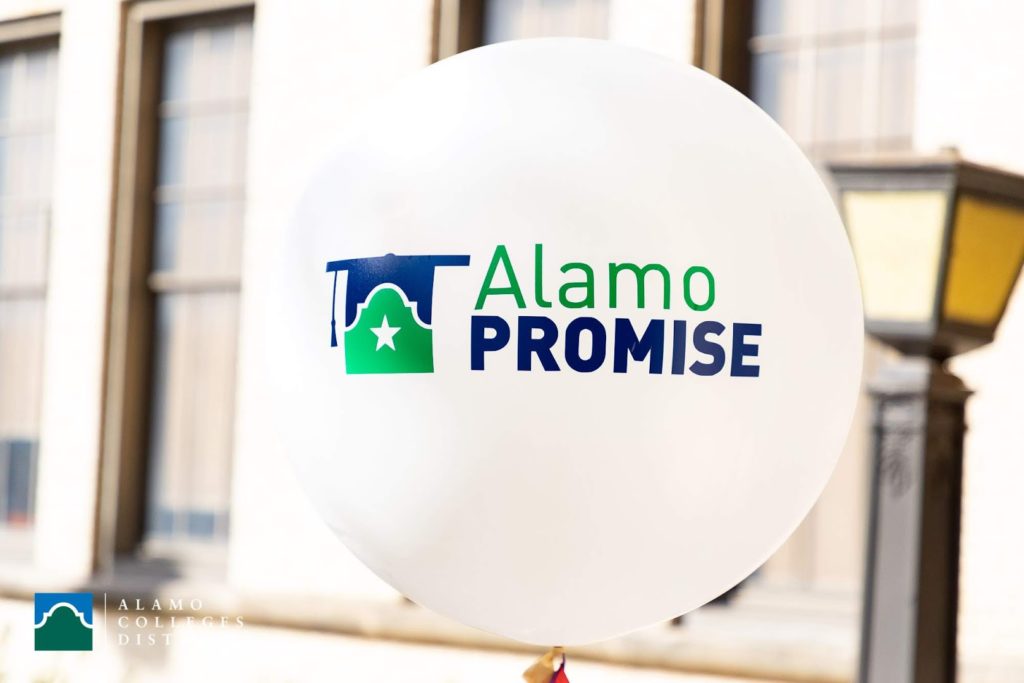
UTSA Bold Promise
UTSA Bold Promise is a tuition promise program that aims to make college more accessible and affordable to graduating High School Texans from middle- and low-income families. Qualifying students who maintain eligibility will have their tuition covered for eight fall and spring semesters within a 4-year time period.
AlamoPROMISE
AlamoPROMISE makes college more accessible to graduating seniors from participating high schools by providing the support necessary to earn a certificate or associate’s degree at one of the five Alamo Colleges. Students who meet the eligibility criteria will receive tuition and fee support for up to three years or through the completion of an Associate degree or certificate, whichever comes first.
2020
USAA Commitment to Advancing Racial Equality
In 2020, USAA committed $50 million to nonprofit organizations to positively address the employment, educational and economic disparities that exist within communities of color and low-income military communities. With this targeted contribution, USAA aims to close gaps across education and job training, employment and income disparity.
Trinity Community Investment
Announced in 2020, SAISD students accepted to Trinity University will have 100% of their demonstrated financial need covered with loans, grants, scholarships and work study programs. Loans for prospective SAISD students would be capped at $3,500 annually to help reduce student loan debt.
Bexar County’s 1st High Occupancy Vehicle (HOV) Lanes
Bexar County’s first of three planned High Occupancy Vehicle (HOV) lanes opened in the fall of 2020. A collaboration between VIA, TxDOT, and local leaders, HOV lanes are designed to decrease commute times, alleviate traffic, and reduce air pollution.
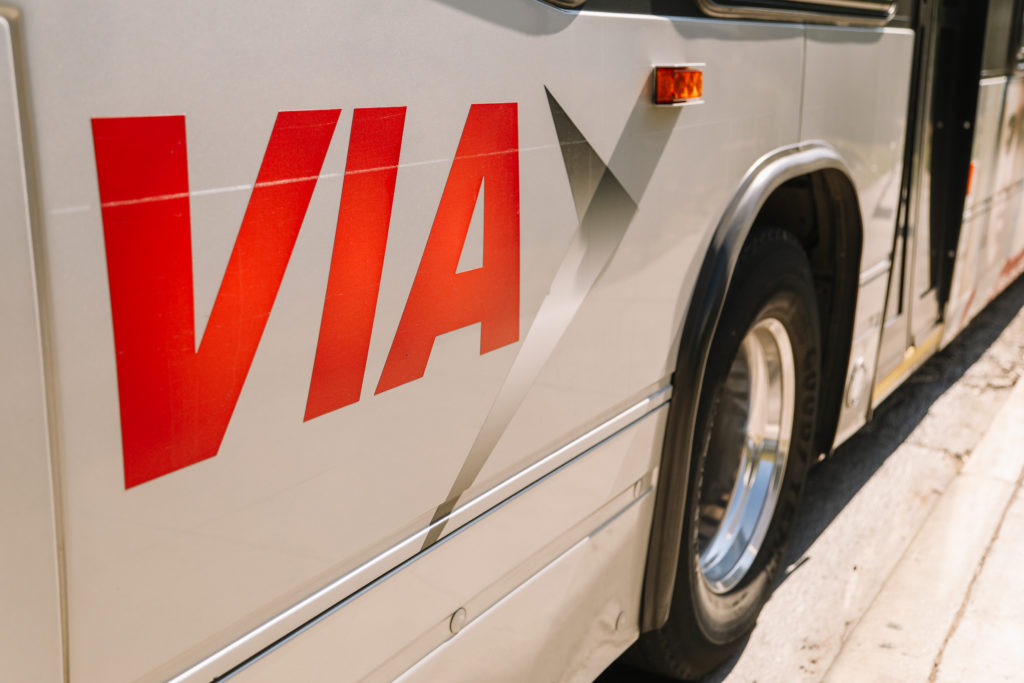
Keep SA Moving
In November 2020, voters overwhelmingly approved funding for VIA and their project plan to Keep SA Moving. The plan aims to improve their transit network, and increase public transportation access and quality. Keep SA Moving serves both present and future San Antonians with innovative ride-share and rapid transit systems.
Port San Antonio Innovation Center
In 2020, the Port San Antonio Board of Directors approved construction of a full spectrum innovation center. The $60 million center will house a 2,500-seat state-of-the-art technology arena, integrated classrooms and meeting spaces, a research and development lab, and the San Antonio Museum of Science and Technology. The Board of Directors will direct profits from the innovation center toward technology-focused K-12, college-level and professional development programs.
SA: Ready to Work
In November 2020, voters showed a strong desire to see investment in workforce development by approving a 1/8-cent sales tax allocation to the City of San Antonio’s SA: Ready to Work program. The four-year, $154 million initiative aims to serve 40,000 people with tuition assistance, wraparound services, and emergency financial assistance. Beginning in fall 2021, the initiative will build upon the services delivered for workforce development under the COVID-19 Recovery and Resiliency Plan.
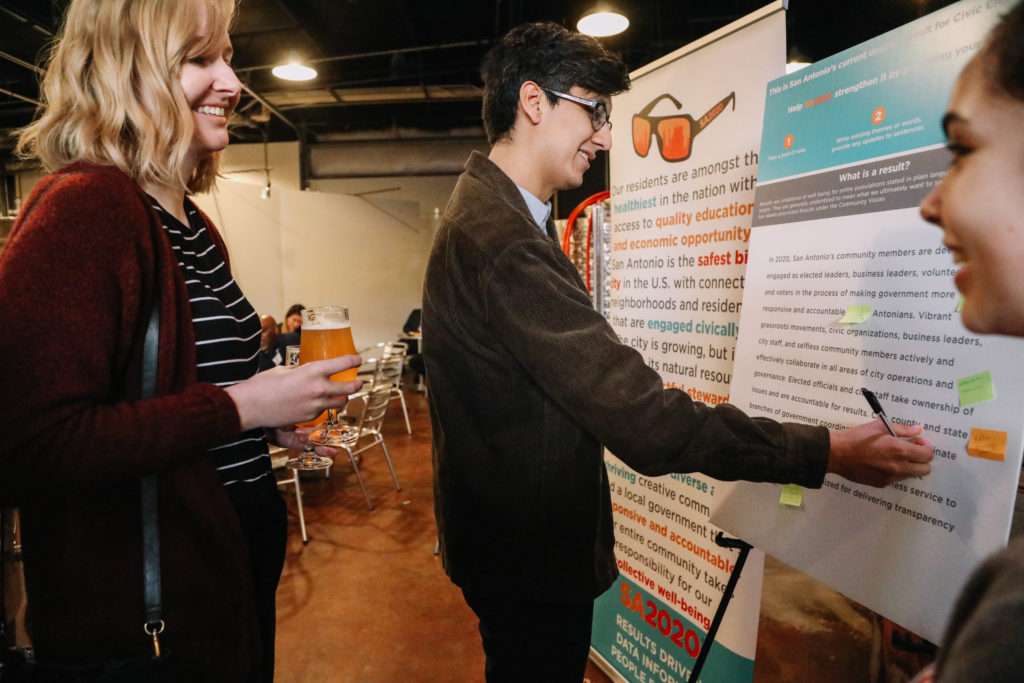
Reaffirming and strengthening San Antonio’s shared Community Vision through 2030
Throughout the year 2020, nearly 12,300 people reaffirmed and strengthened San Antonio’s shared Community Vision for another decade, setting the precedent that San Antonians will envision the future together every ten years. SA2020 led the yearlong community engagement process. The 2030 Community Vision is made up of nine Community Results.
Inspired to help lead change for the next decade? Explore the 2030 Community Vision and all the ways to get involved. We can’t wait to see what’s next for San Antonio’s bold community efforts.
